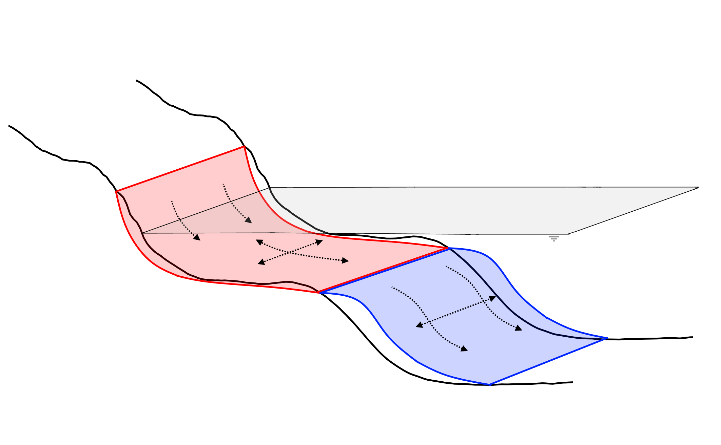A.M. Ton1*, V. Vuik1,2, R.J.A. Wilmink3, S.G.J. Aarninkhof1
1 Delft University of Technology; 2 HKV Lijn in water; 3 Rijkswaterstaat
*corresponding author:
Introduction
Low-energy or sheltered beaches are expected to have similar, but less pronounced, morphodynamics compared to high-energy or exposed beaches. Therefore, only few studies have focused on low-energy coasts and thus, knowledge of morphodynamics in this field lags behind that of high-energy beaches (Vila-Concejo et al., 2020). The lack of morphodynamic knowledge became especially apparent in the dike reinforcement project of the Houtribdijk, the Netherlands. The aim of this research is to gain fundamental understanding of the hydrodynamic processes driving the morphology of low-energy, non-tidal, sandy beaches and develop methods to predict these morphodynamics. The Houtribdijk and Marker Wadden beaches in the IJsselmeer region are used to reach this aim.
Results and Conclusion
The hydrodynamic processes steering the morphology of low-energy, non-tidal, sandy beaches in the IJsselmeer region were determined. Cross-shore beach face erosion is linked to the yearly 95th percentile wave height, implying the importance of higher energy conditions. However, the morphodynamics of individual events is difficult to ascertain, due to the design of the monitoring campaign, but also due to the similarity in morphodynamics caused by mid energy and higher energy conditions.
Below the beach face, the platform and offshore section of the profile evolve through cross-shore and longshore processes. Combined wave heights and water levels steer the platform depth, while wave-driven and circulation-driven longshore flows determine whether the platform extends offshore (Ton et al., 2023, 2021). Longshore sediment transport is quantified through the adjusted and recalibrated Van Rijn (2014) bulk equation. By combining cross-shore beach face erosion, platform height and longshore sediment distribution at the platform and offshore, beach development can be predicted.

Figure 1: Conceptual model of sediment transport at low-energy, non-tidal, sandy beaches during storm
Acknowledgements
This research is part of the LakeSIDE project, funded by Rijkswaterstaat. We want to thank Boskalis for supplying us with bathymetric data and Natuurmonumenten for access to the Marker Wadden.
References
Ton, A.M., Vuik, V., Aarninkhof, S.G.J., 2023. Longshore sediment transport by large-scale lake circulations at low-energy , non-tidal beaches : A field and model study. Coast. Eng. 180. https://doi.org/10.1016/j.coastaleng.2022.104268
Ton, A.M., Vuik, V., Aarninkhof, S.G.J., 2021. Sandy beaches in low-energy, non-tidal environments: Linking morphological development to hydrodynamic forcing. Geomorphology 374, 107522. https://doi.org/10.1016/j.geomorph.2020.107522
Van Rijn, L.C., 2014. A simple general expression for longshore transport of sand, gravel and shingle. Coast. Eng. 90, 23–39. https://doi.org/10.1016/j.coastaleng.2014.04.008
Vila-Concejo, A., Gallop, S.L., Largier, J.L., 2020. Sandy beaches in estuaries and bays, Sandy Beach Morphodynamics. Elsevier Ltd. https://doi.org/10.1016/b978-0-08-102927-5.00015-1
I. Surname1*, F.N. Another-Surname2 , Y. Next-Surname2
1 University Name, Country; 2 Organization Name, Country
* Corresponding author: mail.name@organization.org


